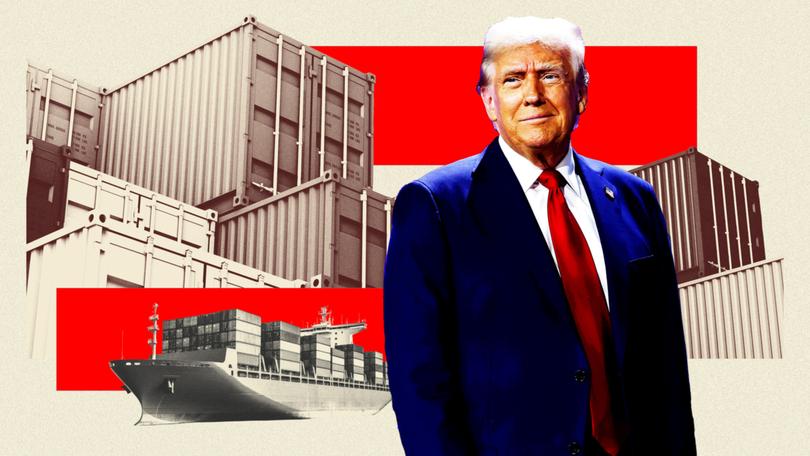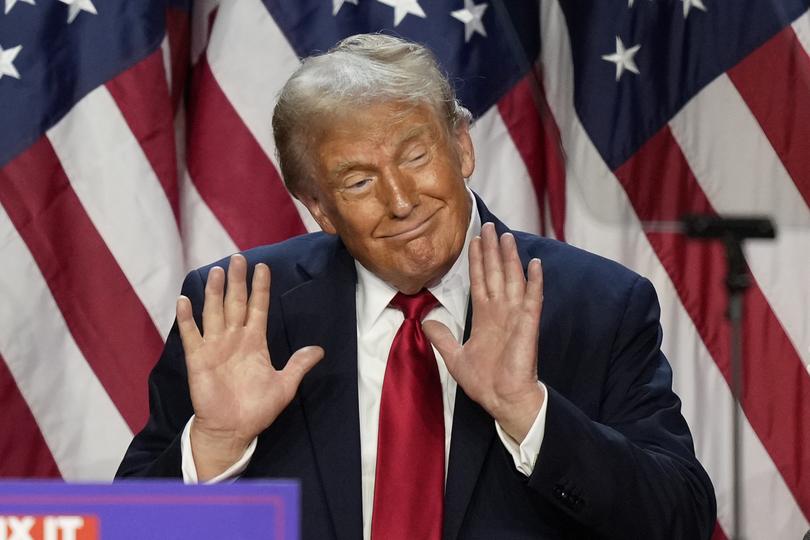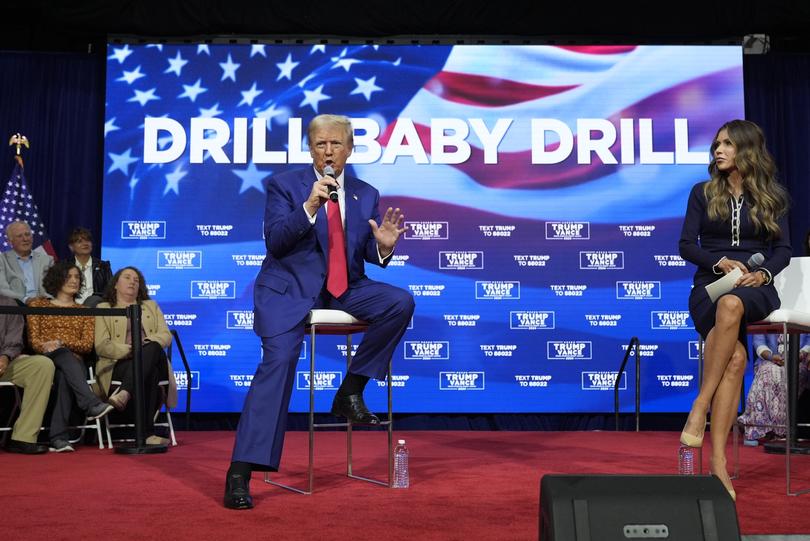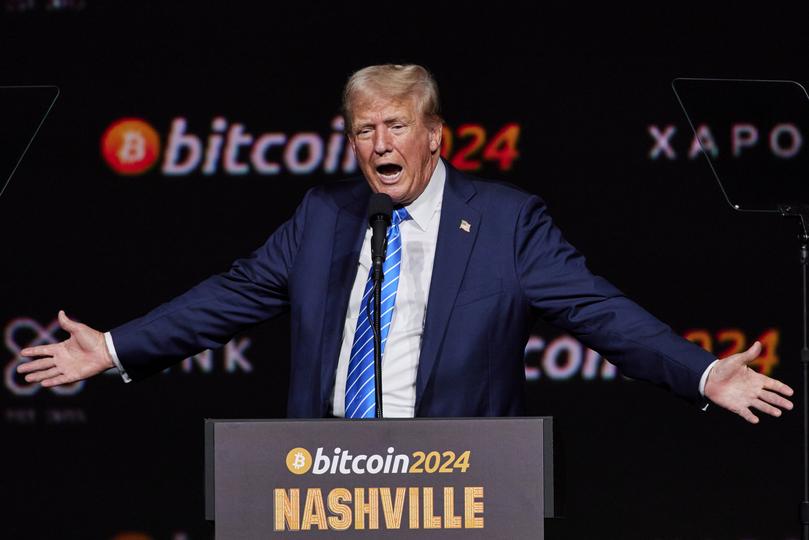Here are five areas to watch in the Australian economy under Donald Trump 2.0

As Trump’s inauguration approaches, we are already seeing the ‘art of the deal’ take full effect. After declaring he wanted hostages freed before his inauguration, Hamas and Israel have come to a ceasefire.
Clearly Trump wants to hit the ground running, and from an economic perspective his key policy platforms are tariffs, taxes and liberalisation.
He is stacking the deck with highly qualified economists who share his worldview.
Sign up to The Nightly's newsletters.
Get the first look at the digital newspaper, curated daily stories and breaking headlines delivered to your inbox.
By continuing you agree to our Terms and Privacy Policy.Trump’s pick for Treasury Secretary, Scott Bessent, is a hedge fund manager who last year told clients he wanted to be part of a “grand global economic reordering”, and said the “tariff gun will always be loaded and on the table but rarely discharged”.
Trump’s pick for chair of the Council of Economic Advisors, Stephen Miran, believes the US could be better off an across the board 20 per cent tariff and as high as 50 per cent.
When it comes to tariffs, how China, and others, respond is as important as the initial announcement. A global trade war would have devastating consequences for growth, and there may be all sorts of horse-trading that affects individual sectors rather than the totality. There are also plenty of senators and congressmen who represent districts reliant on free trade.
The expectation is that tariffs will be imposed, which will have the most dramatic effect on Australia, but Trump’s approach to taxes and deregulation will also have a knock-on effect here.
Here are five areas to watch in the Australian economy under Trump 2.0
The dollar
Keep your travel plans fluid, because trips to America will get more expensive.
The Australian dollar is already down nine per cent against the greenback in the last year, and it is forecast to go lower still.
Why? Trump’s policies are likely to stir inflation.
Tariffs have to be paid at the consumer level, pushing up prices, while tax cuts stimulate more spending, also pushing up the cost of goods.
Tax cuts need to be paid for, which means the US Government must issue more debt. Bond yields (or interest) are inversely related to bond prices, which means the more the US sells debt to pay for its spending, the cheaper those bonds have to be to attract investors. As a consequence interest rates on those bonds is higher.
If inflation gets out of control, the Federal Reserve will also need to raise interest rates to crimp demand. Increasingly, the Fed is warning that a hot US economy is giving them cause for pause, rather than cut as heavily as anticipated.
Markets are already anticipating this scenario, pushing the long-term bond yield to its highest level in two decades.
Meanwhile, Australia is heading into a rate cutting cycle, meaning bond investors (who represent a far larger market than equity investors) will prefer shift their capital to the US chasing a better return. That puts downward pressure on the Australian dollar.
The other factor potentially working against the Aussie is its what is known as a “commodity currency”, tied to global growth rates. A ‘beggar-thy-neighbour’ tariff policy would supercharge US growth at the expense of growth globally, another factor that could push the AUD down.
Of course, the Aussie won’t be the only currency to feel devaluation, as NAB’s foreign exchange team forecasts, “all key major currencies make fresh lows against the USD early next year before finding a base and starting to recover in the second half.”
Inflation and interest rates
From a macroeconomic perspective, a low dollar is one of the biggest potential barriers to the Reserve Bank cutting interest rates, or at the least the magnitude of cuts.
While the official inflation rate is falling to within the Reserve Bank’s target range, the worry is imported inflation.
Christian Baylis, chief investment officer of Fortlake Asset Management and a former RBA economist, believes that imported inflation via the lower dollar will force the Bank to hold interest rates where they are. That is a view shared by Judo Bank’s economic adviser Warren Hogan, who thinks the RBA would be unwise to cut rates in the face of the current rate of growth. Mr Hogan said retailers he talks to are already passing through the currency effect on higher prices to customers, and expected to see its inflationary impact to start showing up in the numbers.
But two of the big bank economists share a very different view.

Luci Ellis, chief economist at Westpac and a former deputy governor of the Reserve Bank said the rule of thumb in the RBA’s models is that a 10 per cent sustained depreciation in the dollar leads to a one percentage point rise in inflation.
The good news is that the RBA looks more at the Trade Weighted Index, rather than purely the US dollar for that rule, and the TWI is down around five per cent, as other currencies have also fallen against the greenback.
Commonwealth Bank head of economics, Gareth Aird believes the dollar impact will be of a manageable magnitude, and that tariff policies may work have a beneficiary effect on Australian inflation.
“They’ll suppress demand for goods out of China for US residents, and that could mean that we get some slightly discounted goods coming from China. We don’t consider the Trump presidency to be inflationary on Australia,” Mr Aird said.
Trade
Australia is a net importer from the US, with a bilateral free trade agreement and a department of foreign affairs and trade spokesperson told The Nightly, Prime Minister Anthony Albanese raised trade in his first discussion with President-elect Trump.
“We will continue to work with the incoming Trump Administration and Congress to pursue Australia’s economic interests and strengthen our bilateral relationship,” the spokesperson said.
The US would not want to harm one of its key allies, according to Huw McKay, a visiting fellow at the Australian National University’s Crawford School, and a former economist at BHP.
The worry, Mr McKay said, is the breakdown of the rules based system for trade, ignoring bodies such as the World Trade Organisation, which has worked to the benefit of Australia.
“It’s very damaging for Australia if the US damages the multilateral trading and negotiation system, because that’s created a world economy in which Australia has prospered, and we’re a small, open trading nation. We absolutely require that system to sustain and grow our wealth. That’s terrible news for us, if it such a policy continues,” Mr McKay said.
The Australian government is highly reliant on the WTO for negotiating trade disputes, using the forum to settle import tariffs placed by China on Australian wine (worth $1.3bn in exports at the peak), and barley ($1bn).
Agriculture, an $80 billion agricultural export market was one of the standout economic performers in an otherwise poor performing economy last year. Red meat and grain exports helped the sector grow by nearly seven per cent for the quarter against a total economy that grew by less than half a per cent.
A Trump presidency could harm the sector in two ways, said Matt Dalgleish, co-founder of agricultural commodity consultant Episode 3.
Under the first scenario, a slowing China demands less of our exports. China is the top export destination for wool, cotton, dairy, barley, and beef, accounting for 80 per cent our wool exports, 70 per cent of barley and is the largest single buyer of cotton.
The second scenario has echoes of the wine, lobster and beef effective bans under the Morrison government. While some of the blame was apportioned to Mr Morrison’s criticism of China’s lack of transparency about the origins of COVID, the underlying driver of the embargoes, Mr Dalgleish said, was tradecraft.
In an attempt to encourage Trump to lift tariffs on Chinese goods, Beijing promised to buy $US200 billion worth of American goods and services, with Australian barley one of the biggest losers.
China is also thinking about what a trade world war would mean for its food security. The country has been assiduously seeking alternative means of supply. Effective bans, like the ones experienced in by Australian producers can have long term consequences. Vietnam surpassed Australia as the number one supplier of lobster in the wake of the, according to a Bloomberg article, while Kenyan exports of macadamia nuts have double in a year.
“Australia’s overreliance on China leaves it vulnerable to these macroeconomic shocks,” Mr Dalgleish said. “Australian producers must double down on diversifying trade partnerships through Free Trade Agreements, particularly in India, Indonesia, the UK, and Southeast Asia.”
Mining sector
Worth a mention in its own right, the most exposed sector to tariffs on China is Australia’s critical commodity exports.
Our minerals are the largest source of foreign income and a cornerstone of the Federal Budget.
Many are worried that tariffs on China’s would be highly detrminental to the iron ore price, but Mr McKay, who for many years was based in Asia for BHP said the picture is much more nanced.
The impact of tariffs on China’s economy and its relationship with Australia’s iron ore industry is nuanced, given the complex dynamics of Chinese steel consumption and global supply constraints. China’s steel industry primarily serves domestic demand, with only 8 per cent of production currently exported, Mr Mckay said.
While China’s housing sector, which has historically been a significant driver of steel demand, other sectors such as renewable energy, automobile manufacturing, and shipbuilding remain resilient. This multi-speed economic activity has helped sustain demand for steel and, by extension, iron ore, despite the broader economic slowdown.

Iron ore has stayed prices have remained resilient at $US100 per tonne, and he believes there is a floor at $US80. Any lower than that and marginal producers are squeezed out, pushing prices back up.
He also sees a falling dollar as supportive for Australian iron ore revenues.
The big change may come from the “jolt” that China may be forced into to deal with its moribund economy. So far, attempts to stimulate its economy have been lacklustre.
“You don’t jolt something into action by tiny little nudges, you give it a really big shove. I hope we get the really big shove now, and that will really determine what happens to the commodity prices that matter most to Australia,” Mr McKay said.
Australia’s oil and gas producers may also benefit from a Trump Presidency, experts say, as a loosening of regulations less emphasis on ESG issues supports both their revenues and investment outlook.
Investments
US Stock markets had already been enjoying banner years, and the so-called Trump Bump helped them to record highs. They have been easing back in the face of higher long term interest rates amid the inflationary outlook.
Trump has campaigned on reducing the corporate tax rate to 15 per cent, compared to an OECD average of 24 per cent.
Mr McKay expects that a big drop in the corporate tax rate might see global companies shift base to the US or firms choose to list on US exchanges instead. Ireland, which has long benefited from its low tax rate could be dramatically affected.
“I think it’s very possible that you actually see a drift in equity market listings from other G7 jurisdictions towards the US,” Mr McKay said.

The tax cuts will be highly supportive of US company earnings but Kyle Rodda, market analyst at Capital.com believes that a lot of the expectation for higher profits would already be baked in which markets very vulnerable.
“Whenever you see valuations this high and interest rate risk loom, the risk/reward on equities look precarious. That’s going to make it more prone to shocks,” he said.
Mr Rodda didn’t expect the Australian share market to see much of a bump from a Trump administration, saying our markets look more expensive than America.
Other companies to benefit may be US exposed names that benefit from both a higher growth market and a lower dollar. That would include names such as Life360, Aristocrat Leisure and James Hardie. Those have already run strongly in the last year, so some caution is advised.

